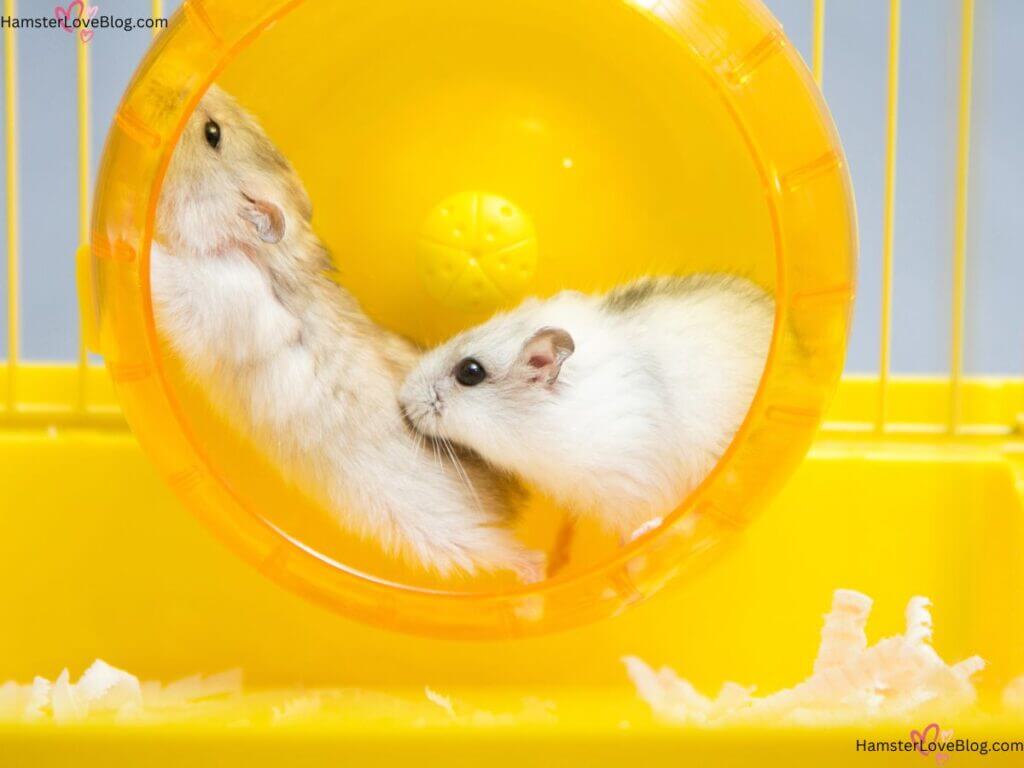
Are you a hamster enthusiast looking to expand your furry family? Have you ever wondered if it’s possible to house these adorable rodents together in harmony?
Look no further, as we delve into the ultimate guide to housing hamsters together! From setting up the perfect habitat to understanding their social dynamics, this comprehensive article will equip you with all the knowledge and tips needed to create a harmonious living environment for your little companions.
Hamsters are known for their cute and cuddly nature, but when it comes to living arrangements, things can get a bit tricky.
Should they live alone or can they cohabitate peacefully?
This guide will explore the pros and cons of housing hamsters together, debunk common myths, and provide expert advice on how to introduce them properly.
Whether you’re a seasoned hamster owner or a novice looking to venture into communal living for your pets, this article promises valuable insights that will help you navigate the world of shared hamster habitats with confidence.
What Does It Mean to House Hamsters Together?

Imagine a world where hamsters reside harmoniously in the same habitat, munching on sunflower seeds, and snuggling up for nap time collectively. That’s primarily what housing hamsters collectively is all about! It entails keeping a quantity of hamsters in the identical enclosure, allowing them to socialize and interact with each other.
In a shared hamster habitat, the furry critters can exhibit natural behaviors like grooming each other, playing together, and even establishing their own hierarchy within the group. While this communal living arrangement can provide companionship and mental stimulation for hamsters, it’s essential to ensure that the cage is large enough to accommodate multiple hamsters comfortably.
When housing hamsters together, choosing compatible cage mates is crucial. Not all hamsters get along well with others, so it’s important to introduce them carefully and monitor their interactions closely. Providing plenty of hiding spots, tunnels, toys, and resources like food bowls and water bottles can help prevent conflicts and promote peaceful coexistence among your furry friends.
Ultimately, housing hamsters together requires careful planning, observation, and ongoing maintenance to ensure the well-being of all pets involved. With patience and dedication, creating a harmonious living environment for your hamsters can be a rewarding experience for both you as an owner and for your beloved pets.
Is It Safe to House Hamsters Together?
While it may seem tempting to house hamsters together for companionship, it’s crucial to consider their natural instincts and territorial behaviors. Hamsters are solitary creatures in the wild and may exhibit aggressive behavior when forced to share a space. Even if they appear to get along initially, conflicts can arise over time, leading to injuries or stress-related health issues. Additionally, housing hamsters together increases the risk of disease transmission and can impact their overall well-being.
If you’re set on having multiple hamsters in one habitat, a larger enclosure with separate living spaces is essential. This setup allows each hamster to have its territory while still benefiting from social interactions through mesh barriers or connecting tunnels. Supervision is key in observing their behavior and ensuring that they coexist peacefully. Remember that individual personalities play a significant role in how well hamsters will tolerate each other’s presence – some may thrive with company while others prefer solitude for a happy and healthy life.
Tips for Successfully Housing Hamsters Together

Now that you understand the basics, listed beneath are some suggestions that will assist you successfully home hamsters together:
Introducing them gradually will allow your hamsters to get acquainted with each other by introducing them slowly and in neutral territory. This will help prevent any aggression or territorial behavior. Start by placing their cages near each other so they can see and smell one another without direct contact. After a few days, you can try to let them interact in a neutral space, like a playpen or bathtub. Always supervise their interactions closely and be prepared to separate them if any signs of aggression occur. With time and patience, your hamsters may eventually bond and become friendly companions.
- Observe their interactions: Keep an in depth watch on how they behave round each other to ensure there are not any signs of aggression. three. Provide a number of hiding spots: Offer plenty of places for every hamster to retreat to if they want their area. four. Ensure they have separate resources: Make certain every hamster has entry to meals, water, and toys to prevent any conflicts over sources.
- Monitor their health: Regularly check on the hamsters to ensure they are healthy and not showing any signs of illness or injury.
- Be prepared to separate them if necessary: If aggressive behavior persists despite your interventions, be ready to separate the hamsters into individual enclosures for their safety.
- Seek professional advice: If you are having difficulty managing the interactions between your hamsters, consider seeking guidance from a veterinarian or animal behaviorist for additional support and advice.
- Stay patient and consistent: Building positive relationships between hamsters takes time and effort, so stay patient and consistently work towards creating a harmonious environment for all your pets.
FAQs About Housing Hamsters Together
Q: Can all hamster species be housed together?
A: It’s usually not recommended to accommodate completely different species of hamsters together as a end result of potential conflicts.
Different species of hamsters have different social structures and communication styles, which can lead to misunderstandings and aggressive behavior when housed together. It is best to keep hamsters of the same species together in order to avoid potential conflicts and ensure a comfortable living environment for them.
Additionally, providing each hamster with its own space, such as a separate cage or enclosure, can help prevent territorial disputes and promote their well-being. Remember, the safety and happiness of your pets should always come first when considering housing arrangements for your hamsters.
Q: How many hamsters can I home together?
A: It’s best to maintain solely hamsters of the same sex collectively to avoid sudden litters.
Additionally, it is recommended to house no more than two hamsters together in a single cage or enclosure. This helps reduce the chances of overcrowding and decreases the likelihood of territorial disputes or aggression between the hamsters.
Providing ample space, enrichment activities, and resources like food and water for each hamster is essential to ensure their physical and mental well-being.
Always monitor their behavior closely when introducing new cage mates or making any changes to their living arrangements to ensure they are adapting well and getting along harmoniously.
Understanding the social dynamics of these small pets can help create a peaceful and happy environment for them to thrive in.
Q: What should I do if my hamsters start fighting?
A: If your hamsters show aggressive habits in the course of one another, it is essential to separate them instantly to prevent accidents.
It is important to have a separate cage ready in case this situation arises, so you can quickly and safely remove any hamsters that are fighting. Once separated, monitor their behavior closely to ensure they are not injured and provide each hamster with some time alone to calm down.
Reintroduce them gradually under supervision to see if they can coexist peacefully. If the fighting persists, it may be necessary to keep them permanently separated or seek advice from a veterinarian or animal behavior specialist for further guidance on how to address the issue.
In Conclusion
Housing hamsters together can be a rewarding experience if done correctly. By following the tips and guidelines provided in this ultimate guide, you can ensure the health and happiness of your furry friends while also enjoying their interactions with each other. Remember to always monitor their behavior closely and be prepared to separate them if necessary.
With proper planning, patience, and care, you can create a harmonious living environment for your hamsters to thrive in. So go ahead and take the leap into cohabitating your hamsters – just remember that their well-being should always come first.





